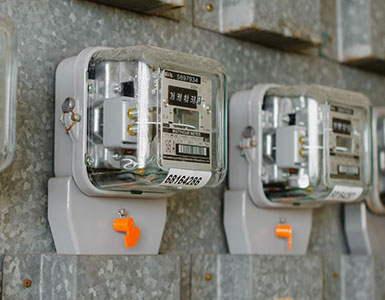India is rapidly working towards realising its vision of affordable and accessible 24×7 power. Already the third-largest conventional energy producer, India is building the world’s largest solar plants to achieve 175 GW of solar capacity by 2022. While the power sector has witnessed an unprecedented turn-around in generation, its weakest link is distribution. Poor equipment maintenance, and high power theft, are responsible for aggregate technical and commercial (AT&C) losses of approximately 25%, amongst the world’s highest. Currently, India curtails renewable-energy generation to prevent grid ‘overloading’, causing renewable-energy developers losses, and affecting equipment efficiency.
The government’s UDAY (Ujwal Discom Assurance Yojana) scheme endeavours to provide some reprieve to India’s DISCOMs, and distribution sector, through financial restructuring. With their capability to cut transmission and distribution losses, and ensure 24X7 power, smart meters have also been made a part of this scheme, which can unlock a cascade of benefits for discoms and consumers.
Smart meters will enable discoms to forecast energy demand cycles in real-time, and swiftly rebalance the grid’s energy sources, achieving renewable-energy infusion. With smart meters recording and anticipating fluctuations throughout the day, discoms can explore ‘Time of Use (ToU) tariffs’ that accurately reflect energy prices. While discoms can shift loads from high-price hours to low-price hours, consumers can also save on electricity bills by opting for more attractive ToU tariffs. Globally, low-cost timings are used for storage applications, such as EV charging. The two-way communication technology underpinning them will enable utilities to facilitate demand response and prediction, and management of peak demand, achieving grid stability. With real-time communication between DISCOMs and consumers, smart meter data can ensure faster outage detection and restoration of services, and end billing inefficiency via an automated bill meter reading. Additional consumer benefits include access to a prepaid billing model wherein they pay only for the electricity they can afford. They can also consciously adopt energy efficient practices, managing energy costs better.
With these benefits, the smart meter is a vital technology in India’s power reform, creating the potential to reduce DISCOMs’ current liability to India’s financial infrastructure, estimated to be Rs 20,000 crore. With the replacement of 25 crore conventional meters with smart meters, billing efficiency can improve from 80 percent to 100 percent, and they have the potential to increase DISCOM revenues by Rs 1.1 lakh crore.
Based on technology availability and requirements, a variety of technologies can underpin the two-way communication with discoms. The simplest of these is low-energy radio frequency (RF) waves, deployed almost a decade ago in the West. There is also the General Packet Radio Service (GPRS), used by most mobile communications today. Making smart metering even smarter are cellular communication options, which unshackle DISCOMs from designing, installing, operating, and maintaining a private network. Cellular technology also gives smart meters inter-operability, coverage, and capacity. This translates to smart meter software that can be updated over the air, much like smartphone apps. Globally, utility providers using smart meters are transitioning to 4G LTE connectivity, which can facilitate innovative solutions in metering.
Smart meters are the first step in the digitisation of energy, paving the way for India’s smart energy revolution. Powered by cutting-edge technologies like the Internet of Things (IoT), and automation, ‘smart energy’ integrates energy consumption with renewable-energy production, relevant infrastructures, through energy services, active users, and enabling technologies. Noteworthy applications include net metering, through which residential solar panels can contribute to consumer energy needs, and reduce their bills, and battery storage, which can help find viable uses for renewable-energy.
Understanding these benefits, the government’s Smart Meter National Programme is working to implement one of the world’s fastest ramp-up of smart meter installation,targeting the retrofitting of 25 crore meters.
Along with universal and affordable energy access, there is a larger imperative to smart meters as well. As the conduit for end-to-end transfer of energy demand, smart meters are the building blocks of smart grids. Globally, smart grid infrastructure investment in countries like China and the US has risen from approximately $67 billion in 2009, to nearly $200 billion in 2015 – creating a corresponding demand for smart meters. The mandatory nature of these meters in a country with the size and population of India can create bulk demand and facilitate economies of scale in reducing manufacturing costs. Smart meters, thus, not only act as a pathway to resolve DISCOM woes with newfound efficiencies, but can also create an entire domestic smart meter industry where none previously existed.
The benefits of smart meters are clearly profound—and most importantly, easily accessible for consumers, for whom it is a simple one-time installation of a compact appliance. What they get in return is an unparalleled degree of transparency and trust in their DISCOMs, and reliable electricity supply.[CourtesyFinancial Express]














Add comment